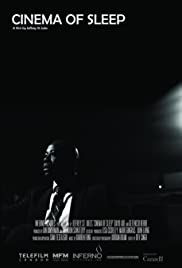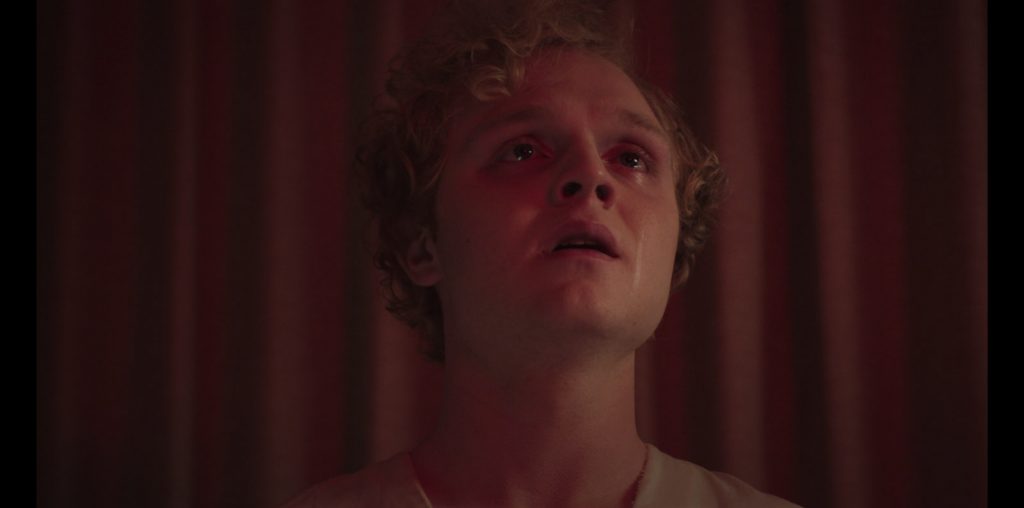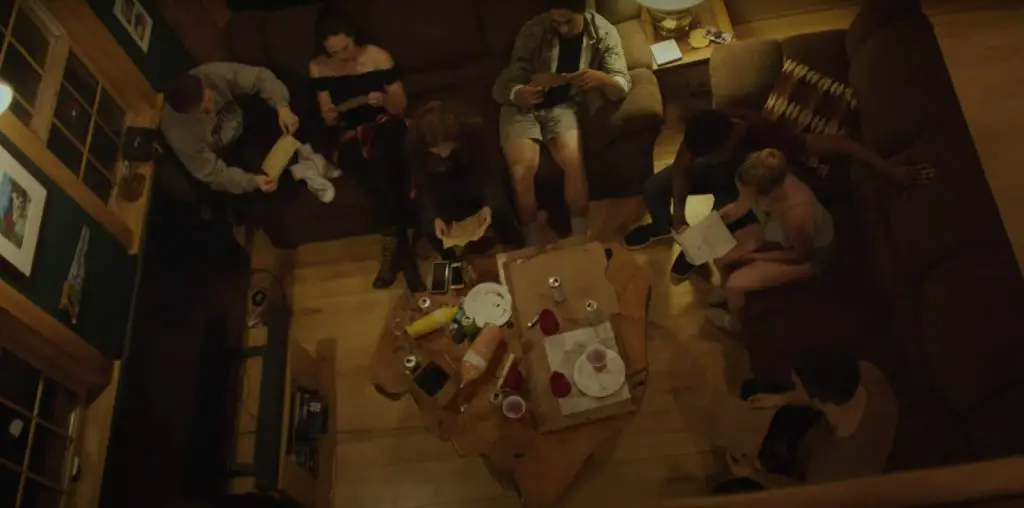
Cinema of Sleep starts with one of the most compelling opening scenes I’ve seen recently. Anthony (Dayo Ade), a Nigerian refugee, is watching a film in a theater, only it turns out to be him waking up to find the body of a woman he’s apparently just killed. Two cops take Anthony away for this on-screen murder, but as he struggles to protest his innocence, he wakes up. He’s in his hotel room in the United States, waiting for asylum, and is relieved it was just a dream.
Then Anthony is shocked to find a dead woman beside him in bed. His family from back home calls him on his with an emergency. Simultaneously there’s a knocking at the door, forcing him to hide the body. When he opens the door, it is the two cops from his dream. Anthony struggles to figure out what happened and hides details from the cops as they slowly turn the screws on him.
“…Anthony is shocked to find a dead woman beside him in bed.”
If the words “psychological thriller” come to mind, that’s because it is the best way to describe Cinema of Sleep without giving too much away. The introduction is just the tip of the iceberg. The rest of the movie is a tug-o-war between resolving some of our questions, often only temporarily, and piling on new ones. Eventually, we flashback to see the previous few days. Anthony opens the door to his room, and a woman in her underwear runs through and locks herself in the bathroom. This is Abrihet (Getenesh Berhe), the woman who ends up dead. From there, we cut back and forth between the present day and the flashback until the tension-filled narrative weaves together until it reaches a satisfying conclusion.
Cinema of Sleep has two particularly strong things going for it: a clever and compelling script by writer/director Jeffrey St. Jules and excellent performances by Dayo Ade and Getenesh Berhe. At first, the strange goings-on seems impossible to explain, and if it were just weirdness for the sake of weirdness, it wouldn’t be the first time I’ve seen that (I’m looking at you, David Lynch). Thankfully, there’s a point to it or at least a twist that makes enough thematic sense for the audience to forgive the loose ends and misdirection. The scenes between the two leads and the Hitchcockian tension associated with knowing that one of them will die is enough to carry us through to the resolution.

"…could be done as a play..."


